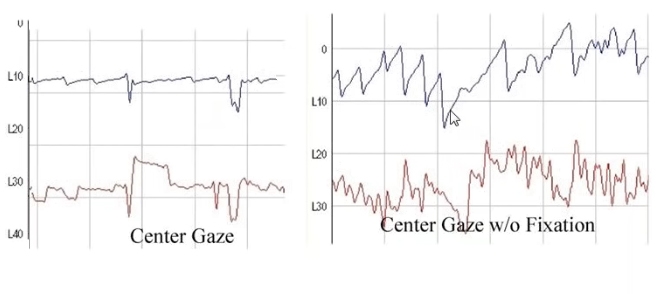(The term Frenzel lens is derived from the name of the French physicist Augustin-Jean Fresnel (1788–1827), who designed the lens for lighthouses, and whose name was presumably subsequently pronounced and spelt incorrectly by some phonetically inclined or idle neuro-ophthalmologist(s)).
The usual signal to suppress nystagmus is retinal slip, as occurs in an isolated peripheral lesion. The lenses, which are illuminated from within, and contain magnifying lenses to prevent gaze fixation, may suppress peripheral vestibular spontaneous nystagmus. (In addition, they make it easier to study the patient’s eye movements.)
When Frenzel’s lenses are used to examine a patient, attention should be paid to possible spontaneous nystagmus, gaze-evoked nystagmus, head-shaking nystagmus, positional nystagmus and hyperventilation induced nystagmus.

Redrawn from: Barin K. Otometrics Webinar - Vestibular Neuritis How to Identify Different Types. Retrieved from: https://www.youtube.com/watch?v=AIhYJqs1dNs
Spontaneous horizontal nystagmus to the right with a very low intensity during fixation. However, when blocking visual fixation with Frenzel lenses (Video 2), the intensity of the nystagmus increased significantly.
(vv)mmc1.mp4-HIGH.mp4(tt)
(vv)mmc2.mp4-HIGH.mp4(tt)
From: Strupp M, Magnusson M. Acute Unilateral Vestibulopathy. Neurol Clin. 2015;33(3):669-x. doi:10.1016/j.ncl.2015.04.012

